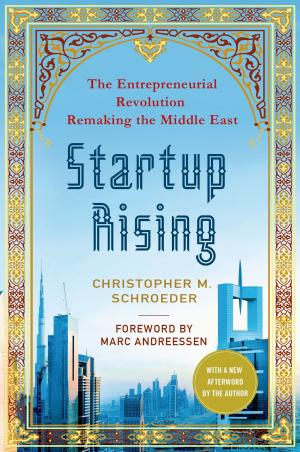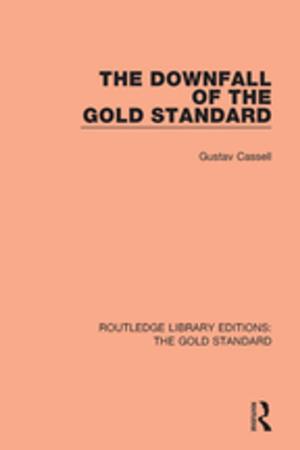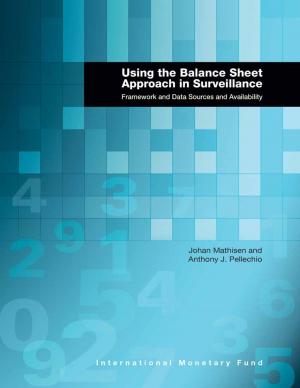Fukushima And The Coming Tokyo Earthquake: And What It Will Mean For A Fragile World Economy
Nonfiction, Science & Nature, Science, Physics, Energy, Business & Finance, Economics| Author: | Tony Smyth | ISBN: | 9784990935009 |
| Publisher: | Tony Smyth | Publication: | December 20, 2017 |
| Imprint: | Smashwords Edition | Language: | English |
| Author: | Tony Smyth |
| ISBN: | 9784990935009 |
| Publisher: | Tony Smyth |
| Publication: | December 20, 2017 |
| Imprint: | Smashwords Edition |
| Language: | English |
This book details the story of two earthquakes, one that has already happened and one that is imminent, and their consequences, not only for Japan but also for the rest of the world. It is structured in a way that ‘chunks up’ in sections, from local/national events through to global consequences.
The first section of the book tells the story of how a country that suffered atomic bombing ended up obtaining a third of its electricity from nuclear power, despite having the misfortune to be located in the most seismically active zone in the world. It then depicts the sequence of what happened in March 2011 after the tsunami struck.
Next, the book details recent peer-reviewed studies about radiation and its effect on human health. A following chapter reveals the full costs of nuclear power– an energy source that never comes in on budget and is incredibly expensive. The final part of this section of the book describes the inadequacy of storing spent nuclear fuel once a nuclear power station has been decommissioned.
The latter half of the book adopts a larger frame or viewpoint, and looks at the use of nuclear and renewable energy in the context of world climate change and the widespread use of fossil fuels.
The final section of the book depicts a coming Tokyo earthquake and its consequences. A big earthquake in or near Tokyo is overdue. They usually happen every sixty to seventy years, yet the last one was in 1923. The author asserts that Japan will have to repatriate much of its treasury bonds which are held in the United States.The tsunami and meltdowns of 2011 represent the most expensive natural disaster in history. Even though Japan is the third biggest economy in the world, because of an estimated debt from the tsunami and Fukushima meltdowns of at least $500 million and weak indebted economy, it will struggle to pay this amount. The most obvious way to pay for rebuilding will be to sell stocks and treasury bonds held in the United States.
An earthquake striking Tokyo will hit right at the nerve centre of the country. All political and economic power is concentrated there.The headquarters of many global 500 companies, as well as all the powerful bureaucracies so vital to the country, are located in one central section of the capital. Most of Japan’s imports and exports are dispatched through Tokyo Bay. After a big quake, this area is likely to be crippled for some time. Moreover, much of Tokyo’s manufacturing takes place on reclaimed land in the Bay – land which tends to liquefy in a big quake.
This book argues that because of the fragile situation of world economies since 2008 (Lehman Bros etc), and the heavily indebted state of Japan’s finances post-tsunami/Fukushima, the only way that Japan will appeal to finance the enormous amount of post-quake rebuilding is to repatriate its investment in US government bonds and securities. This will have an immediate knock-on effect on the American economy and, soon after, most of the world’s economies.
This book details the story of two earthquakes, one that has already happened and one that is imminent, and their consequences, not only for Japan but also for the rest of the world. It is structured in a way that ‘chunks up’ in sections, from local/national events through to global consequences.
The first section of the book tells the story of how a country that suffered atomic bombing ended up obtaining a third of its electricity from nuclear power, despite having the misfortune to be located in the most seismically active zone in the world. It then depicts the sequence of what happened in March 2011 after the tsunami struck.
Next, the book details recent peer-reviewed studies about radiation and its effect on human health. A following chapter reveals the full costs of nuclear power– an energy source that never comes in on budget and is incredibly expensive. The final part of this section of the book describes the inadequacy of storing spent nuclear fuel once a nuclear power station has been decommissioned.
The latter half of the book adopts a larger frame or viewpoint, and looks at the use of nuclear and renewable energy in the context of world climate change and the widespread use of fossil fuels.
The final section of the book depicts a coming Tokyo earthquake and its consequences. A big earthquake in or near Tokyo is overdue. They usually happen every sixty to seventy years, yet the last one was in 1923. The author asserts that Japan will have to repatriate much of its treasury bonds which are held in the United States.The tsunami and meltdowns of 2011 represent the most expensive natural disaster in history. Even though Japan is the third biggest economy in the world, because of an estimated debt from the tsunami and Fukushima meltdowns of at least $500 million and weak indebted economy, it will struggle to pay this amount. The most obvious way to pay for rebuilding will be to sell stocks and treasury bonds held in the United States.
An earthquake striking Tokyo will hit right at the nerve centre of the country. All political and economic power is concentrated there.The headquarters of many global 500 companies, as well as all the powerful bureaucracies so vital to the country, are located in one central section of the capital. Most of Japan’s imports and exports are dispatched through Tokyo Bay. After a big quake, this area is likely to be crippled for some time. Moreover, much of Tokyo’s manufacturing takes place on reclaimed land in the Bay – land which tends to liquefy in a big quake.
This book argues that because of the fragile situation of world economies since 2008 (Lehman Bros etc), and the heavily indebted state of Japan’s finances post-tsunami/Fukushima, the only way that Japan will appeal to finance the enormous amount of post-quake rebuilding is to repatriate its investment in US government bonds and securities. This will have an immediate knock-on effect on the American economy and, soon after, most of the world’s economies.















